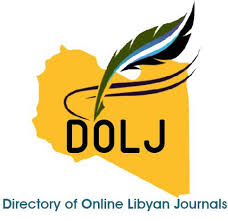Evaluation of Intravenous Drug Incompatibilities in the Intensive Care Units of Mitiga Military Hospital and Tripoli University Hospital, Tripoli, Libya
DOI:
https://doi.org/10.54361/ljmr.v17i2.01Keywords:
Intravenous, Drugs Incompatibilities, Pantoprazole, Meropenem, FurosemideAbstract
This study aimed to evaluate intravenous (IV) drug incompatibilities in the Intensive Care Units (ICUs) of Mitiga Military Hospital (MMH) and Tripoli University Hospital (TUH). It sought to gather data on the compatibility of the most commonly used drugs when infused through the same line. Additionally, it attempted to generate a compatibility drug chart with reliable and updated information to improve safety in the administration of drugs to critically-ill patients. This was a retrospective clinical study. Data were obtained from 200 prescriptions in the MICUs of MMH and TUH. The study focused on IV drugs routinely administered in the ICUs at the same time. Consideration was given to the variables of age, gender, total number of medications, total number of IV medications, as well as types of IV medications. Data analysis was conducted using SPSS Version 26. Demographic findings showed that major age groups were (46-55), (56-65), (66-75) years, mean age was 61.61 years and 1.12:1 were male female ratio. Findings also revealed that, 6 IV drug pairs were categorized as drug incompatibilities out of 10. 11.5% of patients were given incompatible drug pairs, followed by 21% of patients who were given compatible pairs while 25.5% were given drug pairs with no confirmed data. The most frequent incompatible drug was Pantoprazole and the most frequent incompatible pair was Pantoprazole and Furosemide. In conclusion, the incidence of drug incompatibilities in ICUs was predominant. Pantoprazole, Furosemide and Meropenem were identified as the most frequent drugs involved in IV drug incompatibilities.
Downloads
References
Manrique-Rodríguez, S., et al., Development of a compatibility chart for intravenous Y-site drug administration in a pediatric intensive care unit. Journal of infusion nursing, 2012. 35(2): p. 109-114.
Bertsche, T., et al., Prevention of intravenous drug incompatibilities in an intensive care unit. American Journal of Health-System Pharmacy, 2008. 65(19): p. 1834-1840.
Marsilio, N.R., D.d. Silva, and D. Bueno, Drug incompatibilities in the adult intensive care unit of a university hospital. Revista Brasileira de terapia intensiva, 2016. 28: p. 147-153.
Lao, G.C., et al., Compatibility of drugs administered as Y-site infusion in intensive care units: A systematic review. Medicina Intensiva (English Edition), 2020. 44(2): p. 80-87.
Taxis, K. and N. Barber, Incidence and severity of intravenous drug errors in a German hospital. European journal of clinical pharmacology, 2004. 59: p. 815-817.
Tissot, E., et al., Medication errors at the administration stage in an intensive care unit. Intensive care medicine, 1999. 25: p. 353-359.
Taxis, K. and N. Barber, Ethnographic study of incidence and severity of intravenous drug errors. Bmj, 2003. 326(7391): p. 684.
Santos, L.d., et al., Perfil das interações medicamentosas solicitadas ao centro de informações sobre medicamentos de hospital universitário. Revista HCPA. Vol. 31, n. 3 (2011), p. 326-335, 2011.
Paes, G.O., et al., Drug incompatibility in the ICU: review of implications in nursing practice. Rev Eletrôn Enferm, 2017. 19: p. a20.
Cortes, A.L.B. and Z.R. Silvino, Factors associated to potential drug interactions in one Intensive Care Unit: a cross-sectional study. Escola Anna Nery, 2019. 23.
Sandoz Pantoprazole PRODUCT MONOGRAPH. 2019. p. Page 1 of 38.
Collins, S.R., Elsevier's 2022 Intravenous Medications-E-Book: A Handbook for Nurses and Health Professionals. 2021: Elsevier Health Sciences.
Bertsche, T., et al., A purging procedure for pantoprazole and 4-lumen catheters to prevent IV drug incompatibilities. Pharmacy world & science, 2010. 32: p. 663-669.
Scrignoli, C., V. Teixeira, and D. Leal, Drug interactions among the most prescribed drugs in adult intensive care unit. Rev Bras Farm Hosp Serv Saude [Internet], 2019.
Downloads
Published
Issue
Section
License
Copyright (c) 2023 Zeineb Alsharef, Ahmed Abired (Author)

This work is licensed under a Creative Commons Attribution-NonCommercial-NoDerivatives 4.0 International License.
Open Access Policy
Libyan journal of medical Research (LJMR).is an open journal, therefore there are no fees required for downloading any publication from the journal website by authors, readers, and institution.
The journal applies the license of CC BY (a Creative Commons Attribution 4.0 International license). This license allows authors to keep ownership f the copyright of their papers. But this license permits any user to download , print out, extract, reuse, archive, and distribute the article, so long as appropriate credit is given to the authors and the source of the work.
The license ensures that the article will be available as widely as possible and that the article can be included in any scientific archive.
Editorial Policy
The publication of an article in a peer reviewed journal is an essential model for Libyan journal of medical Research (LJMR). It is necessary to agree upon standards of expected ethical behavior for all parties involved in the act of publishing: the author, the journal editorial, the peer reviewer and the publisher.
Any manuscript or substantial parts of it, submitted to the journal must not be under consideration by any other journal. In general, the manuscript should not have already been published in any journal or other citable form, although it may have been deposited on a preprint server. Authors are required to ensure that no material submitted as part of a manuscript infringes existing copyrights, or the rights of a third party.
Authorship Policy
The manuscript authorship should be limited to those who have made a significant contribution and intellectual input to the research submitted to the journal, including design, performance, interpretation of the reported study, and writing the manuscript. All those who have made significant contributions should be listed as co-authors.
Others who have participated in certain substantive aspects of the manuscript but without intellectual input should only be recognized in the acknowledgements section of the manuscript. Also, one of the authors should be selected as the corresponding author to communicate with the journal and approve the final version of the manuscript for publication in the LJMR.
Peer-review Policy
- All the manuscripts submitted to LJMR will be subjected to the double-blinded peer-review process;
- The manuscript will be reviewed by two suitable experts in the respective subject area.
- Reports of all the reviewers will be considered while deciding on acceptance/revision or rejection of a manuscript.
- Editor-In-Chief will make the final decision, based on the reviewer’s comments.
- Editor-In-Chief can ask one or more advisory board members for their suggestions upon a manuscript, before making the final decision.
- Associate editor and review editors provide administrative support to maintain the integrity of the peer-review process.
- In case, authors challenge the editor’s negative decision with suitable arguments, the manuscript can be sent to one more reviewer and the final decision will be made based upon his recommendations.













